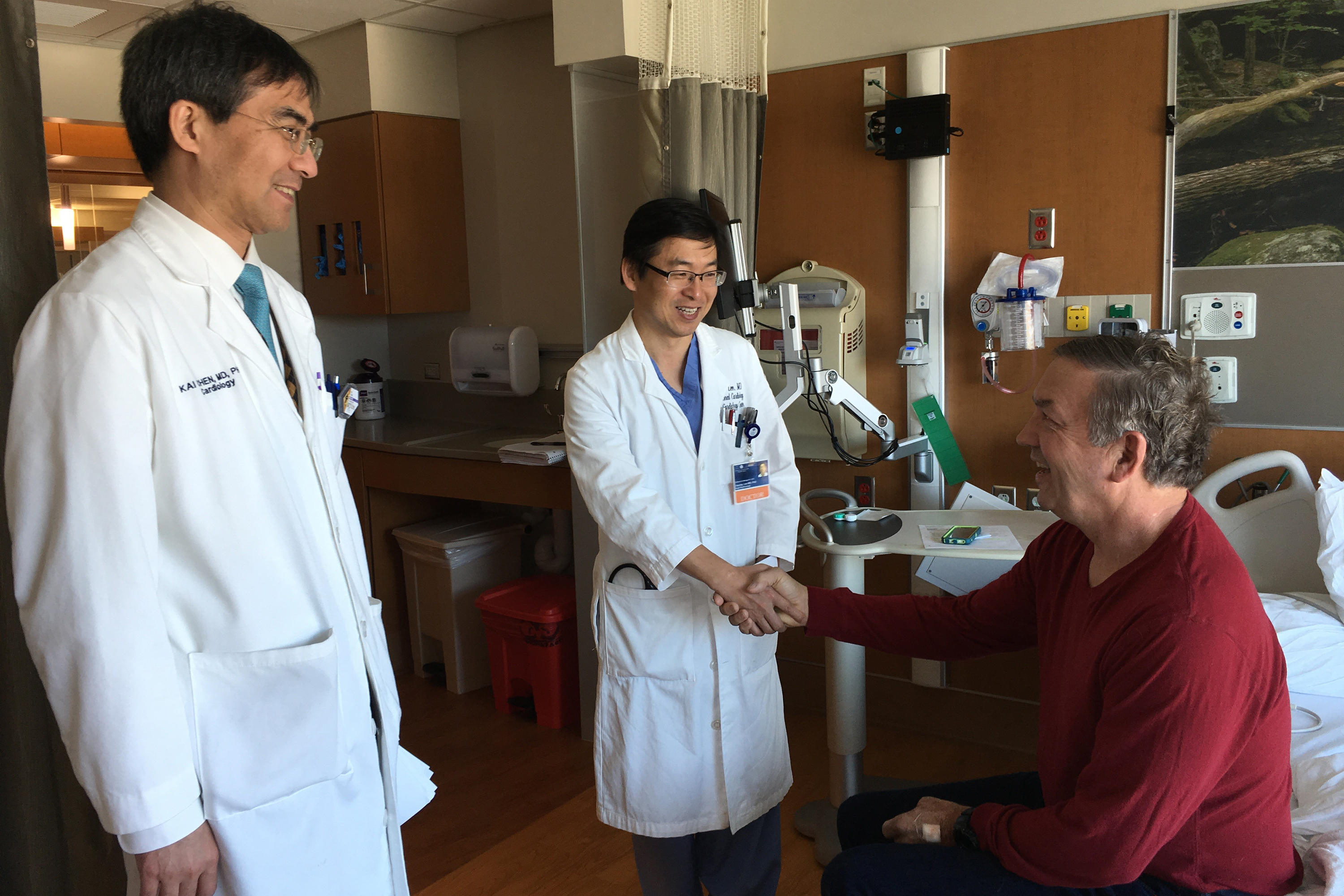On Halloween at 9 a.m., Clyde Livingston, the custodian at Canton High School for more than 30 years, started to experience a severe, burning pain in his chest.
“I thought the pain would go away, but then it started going down my arm,” says Livingston, 59. “Then I knew exactly what was going on.”
Livingston was having a heart attack. His fellow employees in the kitchen at the school called 9-1-1 immediately, and the school’s health department got involved to help.
Within minutes, the Town of Canton Fire & EMS Department’s ambulance arrived, and an EKG test at the scene confirmed that the patient was indeed having a heart attack – of a type known as an ST-Elevation Myocardial Infarction (STEMI) that is caused by a blocked artery.
The paramedics quickly radioed a ‘STEMI Alert’ into UConn John Dempsey Hospital’s Emergency Department to prepare the Pat and Jim Calhoun Cardiology Center’s cardiac catheterization laboratory to care for the heart attack patient right away.
But while in the ambulance in route to the hospital, Livingston’s heart suddenly stopped. His heart attack, along with an unstable blood clot inside his artery, caused a dangerous heartbeat to develop known as ventricular fibrillation, which led to cardiac arrest.
He was revived by the paramedics with lifesaving CPR and one zap of their cardiac defibrillator.
“I remember going fast down Route 44 in the ambulance and hearing the sirens and the horns,” recalls Livingston. “I didn’t think I would make it. I thought I was going to pass in the ambulance.”
But Livingston was one of the lucky ones.
“I was waiting in the ED for Mr. Livingston’s arrival,” says Dr. Juyong Lee, his interventional cardiologist at UConn Health. “Whether your heart attack strikes day or night, UConn Health is always ready to care for you.”
Although his heart artery was 99 percent blocked, Livingston was alert when he arrived, and in just 20 minutes he was taken to the cardiac catheterization lab, where the artery was successfully opened through his wrist using a minimally invasive technique.
“As a result of great teamwork,” Lee says, “the patient recovered from his heart attack and cardiac arrest with absolutely no neurological problems and minimal heart muscle damage.”
Dr. Kai Chen, the patient’s attending cardiologist at UConn Health, says: “Critical survival time was saved, thanks to the quick response of Canton High School’s employees and the Town of Canton ambulance, along with their ability to perform lifesaving defibrillation and CPR. When it comes to surviving a heart attack, time is muscle. Our entire team at UConn Health was on standby to do our additional part to minimize this patient’s heart damage and increase his odds of survival.”
UConn John Dempsey has some of the shortest ‘door-to-balloon’ times for heart attack patient care in the state of Connecticut. This is measured from the time of a patient’s arrival at the ED to a cardiac intervention. The American Heart Association has recognized UConn Health and its Fire Department EMS teams for its high level of performance with Gold level awards.
“Great job,” Livingston told his doctors Lee and Chen, as he was discharged from the hospital on Nov. 2. “I was impressed. I am sold on UConn Health now. They have given me a second chance at life.”
Livingston’s message to others who may experience heart attack symptoms: don’t ignore the warning signs, and get checked immediately. “Don’t take any chances,” he says. “Time is important to your survival.”
With Thanksgiving around the corner, Livingston is very grateful to the team at UConn Health. “I will now be with my wife and kids for the holidays,” he says.



